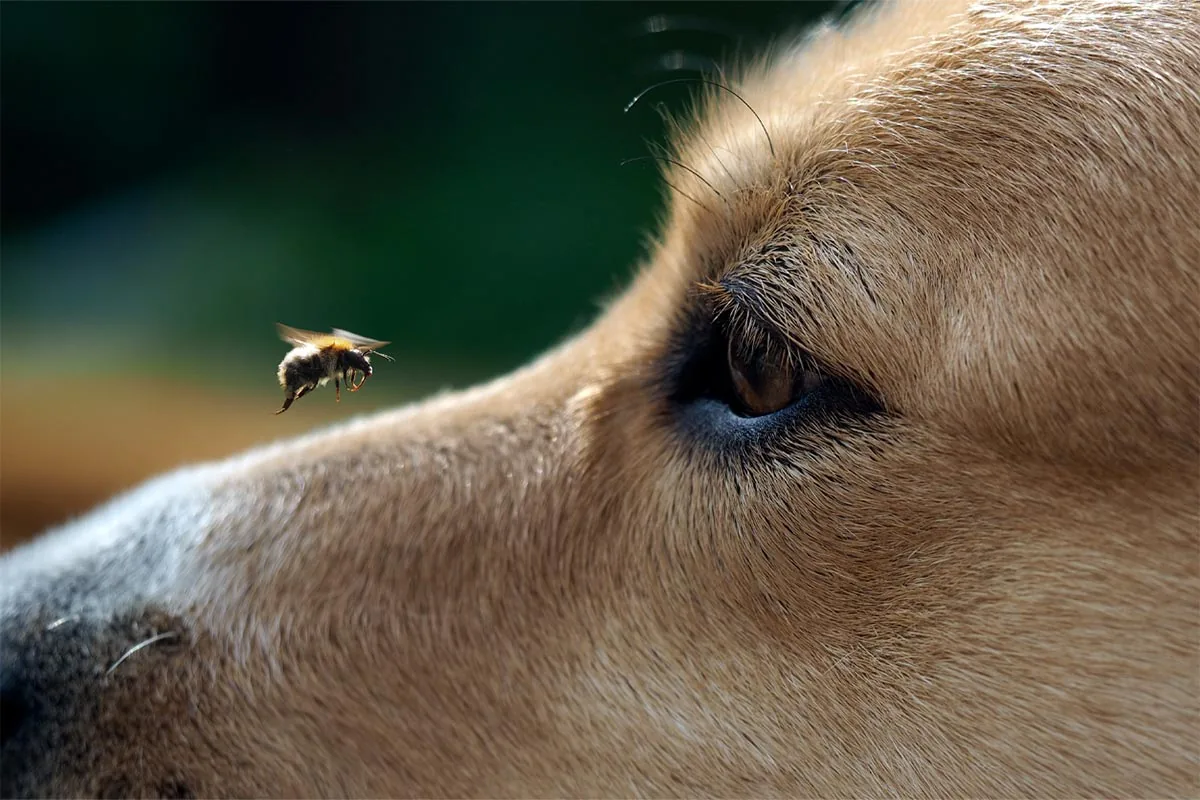My Dog Was Stung by a Bee: What Should I Do?
If your dog has been stung by a bee, it’s natural to feel worried and unsure about what to do next. This blog is here to help you understand the steps you should take and when it’s time to call Warrick Veterinary Clinic in Warrick County, IN. We’re here to provide support and guidance, so if you have any concerns or need to make an appointment, please give us a call at (812) 897-4855 or request an appointment online.

Understanding Bee Stings in Dogs
Bee stings can happen to any dog, whether they’re exploring the yard or out on a walk. A sting can be painful and scary for your dog, but the good news is that most bee stings are not dangerous. It’s important to know what a bee sting looks like and how your dog might react. Typically, you’ll see redness and swelling at the sting site. Your dog may also lick or bite the area because it’s uncomfortable.
Immediate Steps After a Bee Sting
When your dog gets stung by a bee, the first thing to do is stay calm. Your dog will likely be distressed, and your calm demeanor can help soothe them. Gently remove the stinger if it’s visible, but be careful not to squeeze the venom sac, as this can release more venom into the wound. Using a flat object like a credit card to scrape it off is a good method. After removing the stinger, you can apply a cold compress to the area to reduce swelling and provide relief.
Signs of Allergic Reactions
Some dogs may have an allergic reaction to a bee sting. It’s essential to watch for signs like excessive swelling, difficulty breathing, or weakness. These symptoms can indicate a severe reaction, and immediate veterinary attention is necessary. At Warrick Veterinary Clinic, we’re equipped to handle such emergencies and provide the care your dog needs.
Preventing Bee Stings
While it’s impossible to prevent all bee stings, there are steps you can take to reduce the risk. Keep an eye on your dog while they are outside, especially during peak bee activity times like spring and summer. Avoid areas with high flower concentrations or known bee hives. Training your dog to come when called can also help you quickly remove them from a risky situation.
When to Visit the Vet
If your dog is stung by a bee, monitor them closely for any signs of distress or allergic reactions. If the sting area becomes excessively swollen, red, or if your dog shows any unusual symptoms, it’s best to call us at Warrick Veterinary Clinic for advice or to schedule an appointment. We’re here to ensure your dog’s health and safety are taken care of.
Long-Term Effects of Bee Stings
In most cases, the effects of a bee sting are temporary and will resolve with time. However, if your dog is stung multiple times or shows signs of an allergic reaction, there may be longer-term effects to consider. In such cases, our team at Warrick Veterinary Clinic can provide ongoing support and care to ensure your dog’s recovery is smooth and comfortable.
Contact Warrick Veterinary Clinic for Support
At Warrick Veterinary Clinic, we understand how stressful it can be when your dog is hurt or in discomfort. We’re here to provide the support and care you and your dog need. If your dog has been stung by a bee and you’re concerned about their reaction, or if you just need more information, please call us at (812) 897-4855 or request an appointment online. Our team is ready to help and ensure your dog gets the best possible care.
